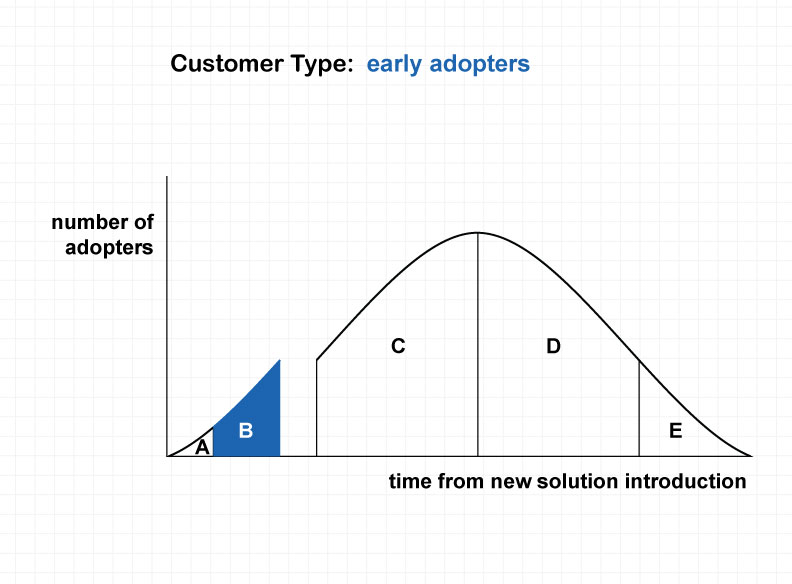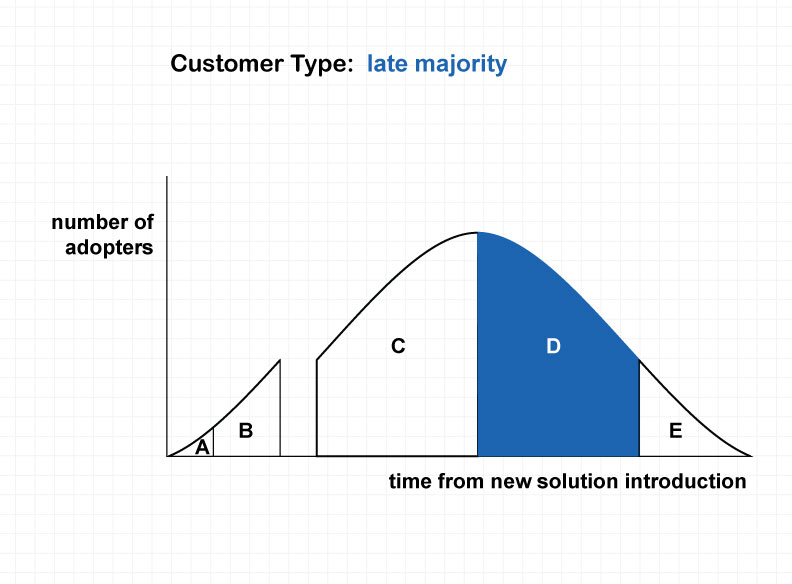
Diffusion Dynamics

The Diffusion Model describes how innovations are typically adopted over time.
The Diffusion Model is one of the most validated social change models, originally developed by Dr. Everett Rogers (and published in his book Diffusion of Innovations).
A – Innovators = 2.5%
B – Early Adopters = 13.5%
C – Early Majority = 34%
D – Late Majority = 34%
E – Late Adopters = 16%
The “Chasm” ( as described by Geoffrey Moore in his book Crossing the Chasm) is the low adoption time period during which customer interest and motivation change from “solution centric” to “user experience centric” adoption decisions.

The diffusion and market life cycles follow similar trajectories. The supplier business development and response to the Voice of the Job, Voice of the Customer, and Voice of the Stakeholder has a specific relationship to the customer types in the diffusion model.


- The basis of competition is new solution novelty.
- Primary concern is “Is the new solution possible?”.
- Adoption is based upon their intuition regarding the idea behind the new solution.
- There is little resistance to adoption.

- The basis of competition is new solution performance.
- Primary concern is “Does the new solution work?”.
- Adoption is based upon the logic behind the concept.
- Resistance to adoption is based upon the perceived risk of the new solution failing to perform.

- The basis of competition is new solution utility.
- Primary concern is “Is the new solution better?”.
- Adoption is based upon the quality of the design specification, and the “fear of being left behind” relative to their peers.
- Resistance to adoption is based upon the uncertainty with respect to the potential new utility.

- The basis of competition is new user outcomes.
- Primary concern is “Is adopting the new solution necessary?”.
- Adoption is based upon the evidence of new value in the new solution, and the “fear of being left out” as the user status quo changes.
- Resistance to adoption is based upon the fear of individual or organizational failure.

- The basis of competition is “Are there any other choices?“.
- Primary concern is “Can I do it?”.
- Adoption occurs under duress as the existing solution options and choices become limited.
- Resistance to adoption is based upon fear of personal loss.
